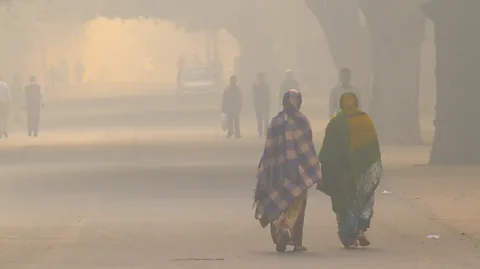Lung cancer in never-smokers is also more common in women. Women who have never smoked are more than twice as likely to develop lung cancer as male never-smokers. Aside from lung anatomy and environmental exposures, at least part of the answer may lie in genetic mutations that are more common in women, especially in Asian women. One of the most prevalent is a mutation known as EGFR.
Lung cancer cells in people who have never smoked usually have a number of mutations that could be causing their cancer, explains Wicki – so-called driver mutations. These genetic changes drive tumour growth, such as the EGFR gene which codes for a protein on the surface of cells and is called epidermal growth factor receptor. The reasons why these driver mutations are more frequently found in female patients, particularly those of Asian descent, are not entirely understood. There is some evidence that female hormones may play a role, with certain genetic variants that affect oestrogen metabolism being more prevalent in East Asians. This could potentially explain the higher incidence of EGFR-mutant lung cancer in Asian women, although the data is very preliminary.
Following the discovery of mutations which can lead to lung cancer in non-smokers, the pharmaceutical industry began to develop drugs that specifically block the activity of those proteins. For example, the first EGFR inhibitors became available around 20 years ago and most patients showed an impressive response. However, treatment often led to resistant cancer cells, resulting in tumour relapse. In recent years, much effort has been put into overcoming this problem, with newer types of drugs now entering the market.
As a result, the prognosis for patients has steadily improved. “The median survival rate of patients who carry such driver mutations is now several years,” Wicki explains. “We have patients who have been on targeted therapy for more than 10 years. This is a huge step forward when you consider that the median survival rate was less than 12 months about 20 years ago.”
As the proportion of lung cancer in never-smokers increases, experts say it is crucial to develop prevention strategies for this population. A number of risk factors have been implicated. For example, studies have revealed that radon and second-hand smoke can elevate the risk of lung cancer in non-smokers. Additionally, exposure to cooking fumes or to stoves burning wood or coal in poorly ventilated rooms may also increase this risk. Since women traditionally spend more time indoors, they are particularly vulnerable to this type of indoor air pollution. However, outdoor air pollution is an even more significant factor in the development of lung cancer.
 Getty Images
Getty ImagesIn fact, outdoor air pollution is the second leading cause of all lung cancer cases after smoking. Studies have revealed that people who live in highly polluted areas are more likely to die of lung cancer than those who do not. Particulate matter less than 2.5 microns in diameter (about a 30th of the width of a human hair), typically found in vehicle exhaust and fossil fuel smoke, seems to play an important role. And intriguingly, research has shown a strong link between high levels of PM2.5 and lung cancer in individuals who have never smoked and who carry an EGFR mutation.
At least one study has shown an association between wildfire exposure and increased incidence of lung cancer – Christine Berg
How air pollution may trigger lung cancer in never-smokers carrying the EGFR mutation has been the focus of research at the Francis Crick Institute in London. “When we think about environmental carcinogens, we usually think about them as causing mutations in the DNA”, says William Hill, a post-doctoral researcher in the cancer evolution and genome instability laboratory of the Francis Crick Institute. Cigarette smoke, for example, damages our DNA, thus leading to lung cancer. “However, our [2023] study proposes that PM2.5 doesn’t directly mutate DNA, rather it wakes up dormant mutant cells sitting in our lungs and starts them on the early stages of lung cancer.”
In their experiments, the researchers showed that air pollutants are taken up by immune cells called macrophages. These cells normally protect the lung by ingesting infectious organisms. In response to PM2.5 exposure, macrophages release chemical messengers known as cytokines, which wake up cells carrying the EGFR mutation and causes them to proliferate. “Both air pollution and EGFR mutations are needed for tumours to grow,” says Hill. Understanding how PM2.5 acts on the microenvironment of cells carrying EGFR mutations to promote tumour growth, he adds, could pave the way for new approaches to preventing lung cancer.
The association between air pollution and lung cancer is not new. In a landmark paper establishing the link between smoking and lung cancer in 1950, the authors suggested outdoor pollutants from the burning of fossil fuels as a possible cause. But policies to date have focused almost exclusively on tobacco control. But 75 years later, air pollution is finally coming into focus.